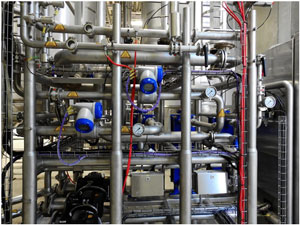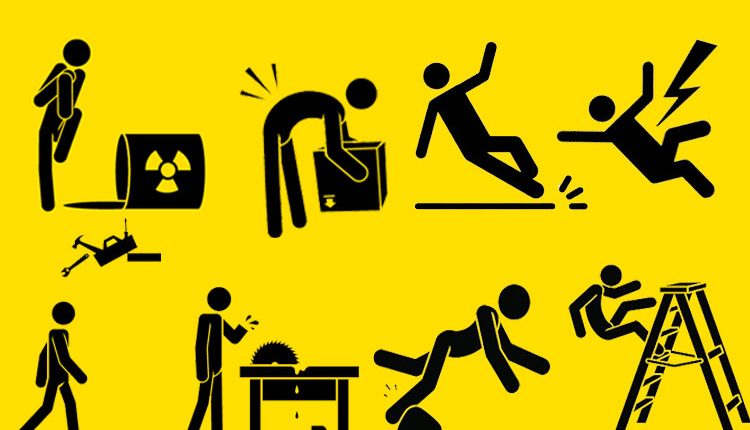One of the biggest challenges for industry, manufacturing or otherwise, is workplace injuries and casualties. By the look of things this area has not been given its due importance. However, of late, things are changing for the better. Safety awareness has gone up as well as financial allocations. In this article we will look at various aspects of safety and prevention measures initiated towards detection and protection.
Data from the CDC says, there are approximately 2,000 eye injuries each day (730,000 per year) in the workplace. Primarily, these injuries occur from chemical reaction, striking or scraping by flying objects, dust, etc., penetration from objects such as nails, staples or metal/wood slivers, optical radiation or chemical and thermal burns. Just by providing safety glasses or goggles it cannot be ensured that employees are protected from eye injuries.
Prior to implementing a visual protection programme, it is first necessary to conduct a comprehensive hazard assessment of the work environment to determine the type and extent of the hazards present.
The five fundamental steps to risk assessment that apply to hazards in the workplace, including:
- Hazard Identification
- Hazard Assessment
- Control Development and Decision-Making
- Control Implementation
- Evaluation/Supervision of Controls
In order to figure out hazard identification, it is first necessary to define a hazard. It is a naturally occurring or man-made agent or condition that has the potential to cause harm.
The process of hazard identification begins with a comprehensive review of the facility and its specific processes that pose visual hazards to employees.
Debris flying around is often found in manufacturing, mining and other industries which have loose particles or materials that are being cut, welded or brazed. Additionally, areas in manufacturing, mining and construction industries create significant falling object debris which can cause eye injuries.
Generally, grinding operations produce fine particles or sharp shreds that can cause eye injuries by embedding or penetrating the eye. One of the most common causes of workplace eye injuries is the presence of naturally occurring dust particles or particles created by work activities.
Several impact tools, such as staple and nail guns, also pose a significant visual threat to employees. These workplace accidents can cause severe and permanent eye injuries.
A few specific hazards from chemicals occur most frequently during mixing and pouring and can cause burns and systemic issues as a result of contact. Two of the primary reasons of concern in the workplace are laser radiation and welding operations. Both are capable of generating high levels of heat, both ultraviolet and infrared, as well as reflected light radiation.
It is important that when conducting a survey of hazards and control options, specific equipment operators are also included in it.
Any workplace hazard is assessed according to probability and severity of an injury. There are myriad methods of conducting hazard or risk assessments. They can be qualitative or quantitative in nature, depending on the process used although each one has the same basic probability and severity aspects.
Moving on to the next step, the hazard assessment process is the development of controls and decision-making on which to implement control. Importantly, this control development used must always be based on the NIOSH Hierarchy of Controls Model, which includes the following:
Removal: In order to prevent eye injuries in the workplace, the best and sustainable permanent solution is to eliminate the hazard altogether. For instance, a visual hazard elimination may include the removal of the cause of flying debris, such as falling objects. This can be accomplished by correcting conditions that cause the objects to fall (more frequent clean-ups, guards to prevent objects from falling from conveyors, etc.).
Replacement: Protection through substitution of visual hazards could be challenging, but with some creativity, it can be achieved. For instance, comparatively more harmful or hazardous chemicals can be replaced with those which pose lesser risk.
Engineering controls: To prevent eye injuries, Engineering controls have infinite options. For instance, a grinding operation generating flying debris and dust can be placed in a glove box which will contain the debris, but it has limits due to manufactured part sizes. Various other engineering controls may involve isolation from the hazard, such as the separation of employees from laser beams.
Administrative controls: This process includes training, procedures, policies or shift in designs. These are aimed at changing the behaviour of employees rather than actually removing the hazard.
Personal Protective Equipment: A personal protective equipment (PPE) is a very common method of protecting workers from eye injuries. Of course, it is used in conjunction with other control methods.
Post implementation, these control measures must be evaluated as it is imperative that all hazard assessments be reviewed at least annually to ensure validity.
How to select a PPE for Visual Hazards:

Selection process of the appropriate PPE must be based on the comprehensive hazard assessment. All safety eyewear must be clearly labelled as “ANSI Z87” (American National Standards Institute.) ANSI Z87 is a certification process that tests eyewear for basic and high impact on glass lenses and frames, exposure to non-ionizing radiation and chemicals and durability against flammables and corrosion.
The PPE which is most commonly used to prevent eye injuries from dust and flying debris includes safety glasses, goggles and shields. These are specially made to protect against high-impact debris and chemicals. Apart from standard safety glasses, many safety professionals now recommend “enhanced eyewear,” which are those that have foam rims around the edges to prevent the intrusion of particles behind the lenses. Although such types of eyewear significantly reduce the risk of flying debris but are not without some associated problems.
The commonly used chemical, formaldehyde, is typically released slowly and continuously from furniture, building materials, paint and coatings. It is a highly harmful and carcinogenic gas that causes conditions such as “sick building syndrome”. This condition, caused by inadequate ventilation and chemical contaminants from indoor sources, can lead to various symptoms for building occupants such as acute discomfort, headache, burning sensation in eyes or nose, or throat irritation, dizziness and nausea, difficulty in focusing, fatigue, and sensitivity to odours. The World Health Organisation (WHO) for example, has established an indoor air quality guideline for exposure to formaldehyde of only 80 ppb as a 30-minute average.
All said and done industry can only grow and prosper if safety measures at the workplace are enhanced. Proper investments and cutting-edge technology are extremely important for tackling the challenges.
Article by Arijit Nag
Arijit Nag is a freelance journalist who writes on various aspects of the economy and current affairs.
Read more article of Arijit Nag


